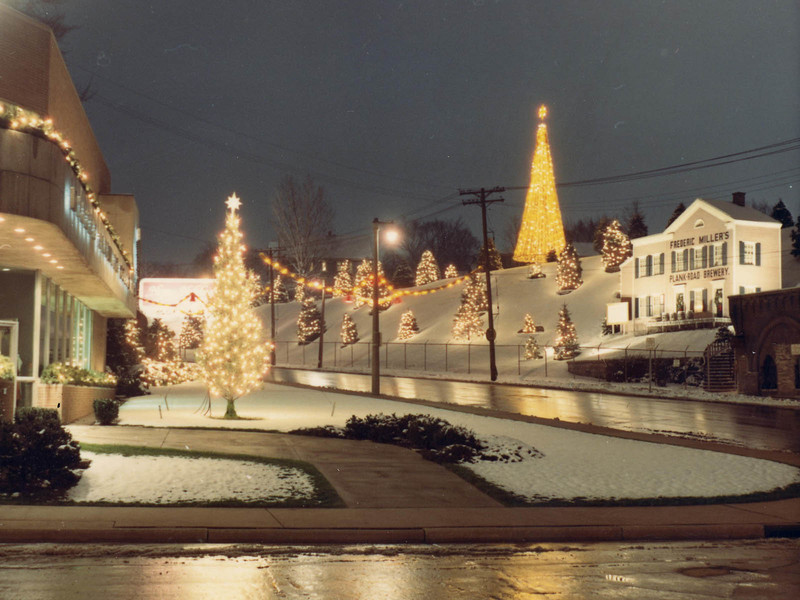Canoodling canoeists, riverbank lotharios and skinny-dippers here, there and everywhere. By the 1920s, local newspapers had taken to calling the Milwaukee River between North Avenue and Capitol Drive "Petters' Paradise." In summer 1921, with public complaints soaring, Milwaukee police put a damper on the watery lasciviousness.
The department acquired a secondhand but rather sleek motor boat, equipped it with a powerful spotlight and manned the craft with two officers daily from 8 a.m. to midnight. The boat set to work with then-Chief of Police Jacob Laubenheimer promising immoral conditions would stop within a week.
Though police did not name the boat, young couples interrupted in romantic interludes began calling it "the killjoy." In a rare example of official good humor, Milwaukee police embraced the name. River patrol boats would wear out and be replaced over the decades, but each new craft was nicknamed Killjoy.
The Killjoy did much more than enforce morality. Chief Laubenheimer told a reporter in July 1931, "We had a rowdy element to contend with on the river. There were several tough north side gangs who used to make life miserable for respectable citizens by stealing, fighting, destroying property and gambling. Women and children were not safe along the river. When the first police motorboat was launched, this trouble was greatly reduced and in later years was completely ended."
But the boat proved troublesome in its first year and departed for a complete overhaul. In July 1922, the Milwaukee Journal announced its return with a memorable headline, "Canoe Spooning Off: Police Boat Fixed."
Officers assigned to the Killjoy had life saving and first aid training. Daytime duties included watching for swimmers in distress. During its four decades of operation, the patrol saved dozens of lives. Patrolman Erwin Riemer recalled one rescue in a July 12, 1931 interview with the Milwaukee Journal:
"One day in summer in 1926, a young couple attempted to swim across the river at the foot of Meinecke Avenue. They were three-quarters of the way across when both became exhausted and started floundering. I was working alone that day and had gone by just before they got in trouble.
"I happened to look back and saw the boy, who was about 17, and the girl, about the same age, waving their hands in the air and swallowing water. I turned the boat around, pulled alongside, managed to drag both into the boat and took them ashore. After 15 minutes of artificial respiration both recovered. Neither one of them even said so much as thank you!"
On another occasion, a man attempted suicide by jumping from the Locust Street bridge. He landed feet first in a shallow spot and found himself up to his waist in mud and up to his neck in water. Trapped but unharmed and having second thoughts about ending it all, he was bellowing for help when the Killjoy arrived.
At night, the boat cruised along slowly and quietly, on the lookout for trouble and living up to its name by turning its spotlight on drifting canoes and furtive activities on the river banks. For example, in the early morning hours one Sunday night in June 1925, six people found themselves charged with disorderly conduct.
The Milwaukee Journal reported the incident in a June 15, 1925 article headlined, "Killjoy Tuned Up, Interrupts Three Friendly Couples."
"The youths arrested are members of the Belle Isle Canoe Club. They danced until midnight with their sweethearts, then went out in canoes despite the pouring rain. Irvin Karnatz, commander of the river patrol boat Killjoy, followed the three canoes and saw petting parties which he believed to be disorderly. He gave chase and ordered the canoes to pull to the curb – pardon, bank."
The patrol was also credited for reducing the frequency of nude swimming, a fact surprising to those of us who thought our grandparents and great-grandparents were more sedate in their youth, although in the summer of 1931, police did receive calls from angry Riverwest residents about repeated instances of public nudity on the Shorewood side.
The patrol operated out of a concrete boat house south of the Locust Street bridge, next to the Gordon Park bathhouse. Officers assigned to the Killjoy knew many of the people frequenting the river by sight. This made them adept at spotting strangers who were up to no good. And when trouble happened, the Killjoy would be on the scene in a flash – the boat was fast and its patrol area was small, a bit over two miles of river between the North Avenue dam and Capitol Drive.
An accidental fire destroyed the first Killjoy in 1926, but a new boat was ready for service when the river thawed in spring 1927. In 1936, the police requested a replacement and specified one capable of 32 mph. The city purchasing board, being a bit of a killjoy itself, felt such a fast-moving boat would endanger canoeists and substituted a slightly more sedate craft.
The river patrol was mothballed in 1939, but regular patrols resumed in 1944 after a spate of drownings on the upper river. Police warned swimmers under the age of 18 to be extra cautious. Unaccompanied small children swimming in the river, on the other hand, were immediately marched home to their parents.
By 1948, things on the upper river were getting rough. Police were frequently targeted by rock-throwing youths from the riverbank. Matters escalated when several 55-gallon drums filled with rocks were tipped into the river in the hope the Killjoy would strike the submerged drums and sink. The boat never did sink, but it usually broke a few propellers each summer on the underwater obstructions.
The last Killjoy, an 18-foot Chris-Craft, entered service in 1956 and patrolled into the 1960s. In May 1961, for example, the Killjoy guarded two Milwaukee-Downer College rowing crews. (Or, as a contemporary newspaper account put it, "Two boats carrying 16 girls dressed in abbreviated costumes.") The rowing crews reported BB gun fire from the east bank of the river south of Hubbard Park. After a two-day stakeout of the riverbank, police apprehended two boys who admitted firing the shots.
Patrols ended soon afterward, but the "bane of river petting parties," as one newspaper called it, was the forerunner of today's police Marine Operations Unit, which watches over the lakefront and harbor areas.
According to a police spokesman, none of the department's present boats have names. Perhaps it's appropriate the Killjoy nickname faded from use with the end of 40 years of service on the upper river.





